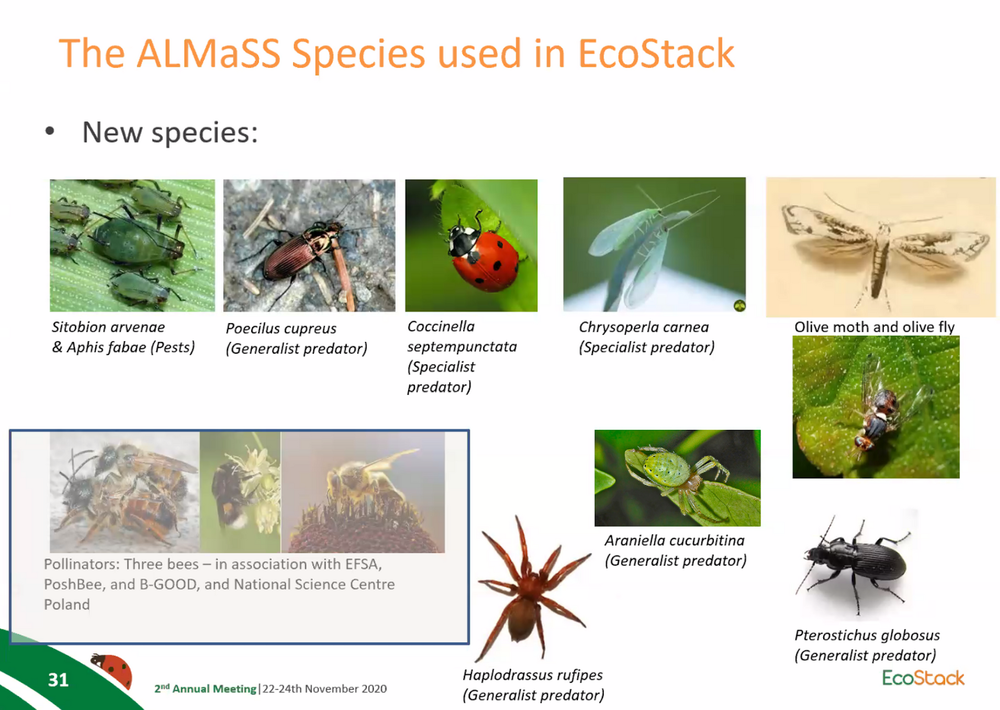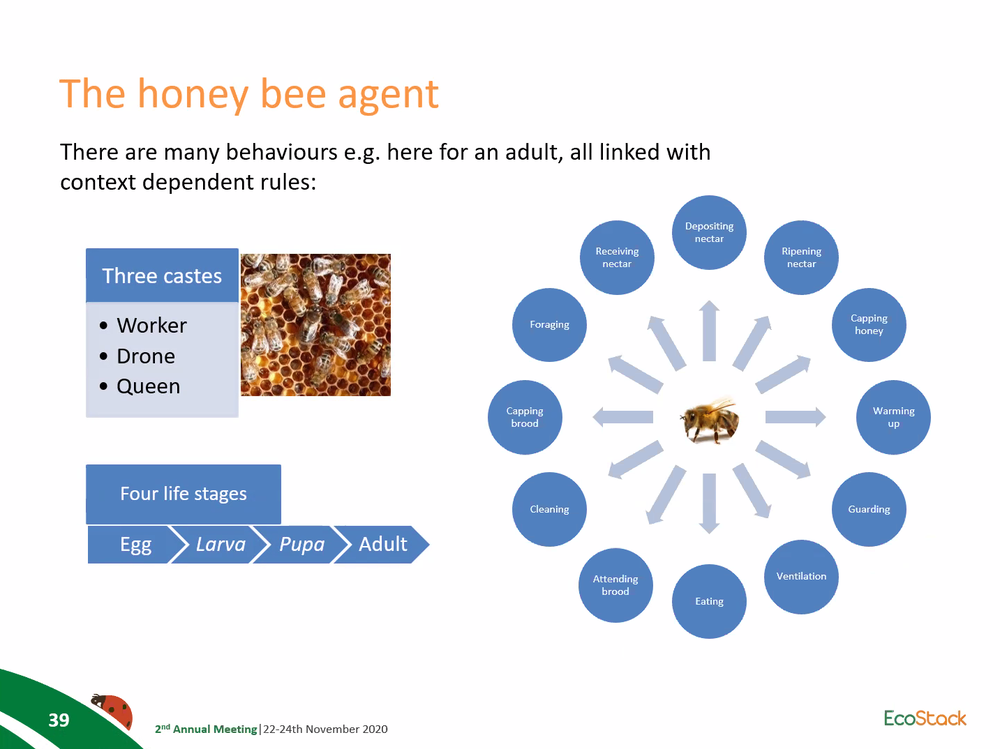pan-european assessment, monitoring, and mitigation of stressors on the health of bees
ALMaSS: Creating detailed landscape models
EcoStack’s second annual meeting took place between 22-23 September 2020. The H2020 project aims to develop and support ecologically, economically and socially sustainable crop production via stacking and protection of functional biodiversity. One topic of discussion during the meeting was the Animal, Landscape and Man Simulation System (ALMaSS) agent-based model system.
ALMaSS models different animal species as individuals (agents), which move around inside a virtual landscape to breed and die much in the same way as the real species do in their natural environment. One type of species used in the model is pollinators.

The ALMaSS species used in EcoStack.
The honeybee agent-based model is the most complicated model integrated into ALMaSS. The behaviour of this model depends on the individual bee’s situation and context, as well as on its individual motivation. The adult honey bee agent may exhibit a variety of behaviours (e.g. guarding, eating, cleaning, depositing nectar, capping honey etc.), all linked with context-dependent rules.

Slide illustrating the honey bee agent.
Despite its complexity, ALMaSS offers a highly detailed, realistic and reactive model to evaluate the impacts of EcoStack strategies. Moreover, the model can integrate landscape context and multiple stressor interactions for a pesticide risk assessment.